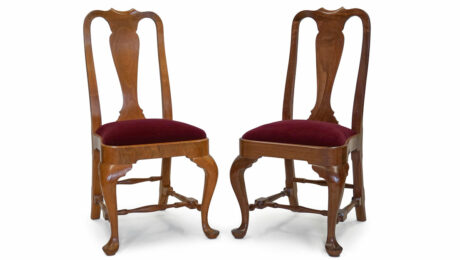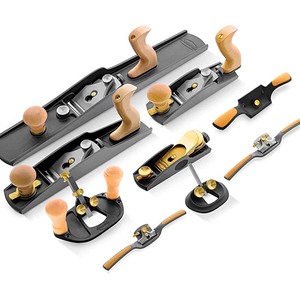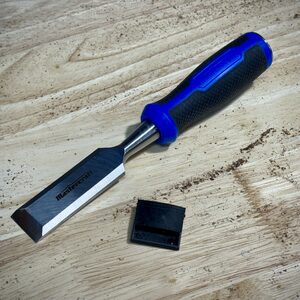Traditional Chinese Planes: Balancing the East and West
Luke Lyu shows off traditional Chinese planes and how he took inspiration to develop the design of Zen Wu planes.Sponsored by Zen-Wu Toolworks

At a glance, a Chinese plane looks like a Japanese plane with a horizontal stick. Yet upon closer inspection, a Chinese plane is a push plane, and the blade is secured with a wooden wedge; thus, it now appears to resemble a traditional Western plane. As you pick one up, you find the similarity ends there: the mouth is somewhat in the back of the plane, and it uses a three-point contact sole like a Japanese plane. What an interesting plane, you wonder. Why this design? And how do you use it?
Those are good questions.
The most important word when talking about Chinese planes is “balance.” A Chinese plane is balanced right in front of the mouth so that the user can seamlessly switch between front registration surface and rear registration surface on the bottom of the sole.
You stand behind the workpiece and grab the plane with both hands on the handle while extending your index finger. When you lift the plane up in the air, it is important that you be able to adjust the forward tilt of the plane with minimal effort. If the toe or heel keep sinking down in midair, you need to double-check your center of gravity. To adjust the center of gravity, remove material from the heavier side by shaping or chamfering, or when excessive material removal is needed, chopping off a sections from the heavier end. Your thumbs can be tucked behind the blades or below the handles. You also want to rest your palm down on the plane; if you lift your wrist up, you may scratch your knuckles during planing.
Zen Wu planes can be found at zenwutoolworks.com and on Instagram.




















Log in or create an account to post a comment.
Sign up Log in